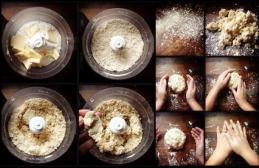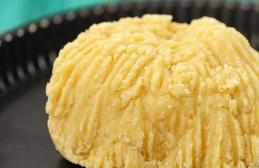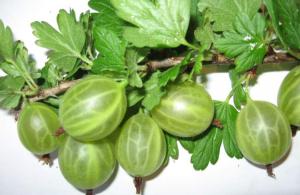9 creative ideas for using wallpaper scraps to benefit adults, children and their homes. We'll tell you what to make from leftover wallpaper
No renovation is complete without leftovers. However, there are many ways to make your production virtually waste-free. Especially if we are talking about some magnificent wallpaper that you fell in love with in one of the stores, and then proudly carried it to your home, filled with joy and anticipation of seeing it on the wall. Scraps or even remaining untouched rolls of wallpaper can, of course, be prudently stored in the pantry in case you have to patch up defects that have appeared over time. This is very important in those houses where there are small children who love to draw on the walls, or animals who also do not mind making their contribution to the interior decor. As always, we're going to give you some more creative ideas. And if they inspire you very much, not only scraps from your wallpaper can be used, but also leftover rolls that are not sold in stores, which are usually sold for next to nothing.
What to make from leftover wallpaper
Very small pieces of wallpaper can be used to decorate furniture, fittings or lighting fixtures(just don’t make lampshades for incandescent light bulbs from paper wallpaper; only energy-saving and LED lamps meet safety requirements in this matter). This will help not only to decorate the house with some bright and intricate accents, but also to unite the space with the help of one motif. For example, in the hallway you have a bedside table with exactly the same fronts as the accent wall in the living room, and it seems to hint that your interior was not hastily assembled from anything, but was carefully thought out by professionals. By the way, fabric or wrapping paper can be used instead of wallpaper. As we already wrote in our article about combining different prints and colors will make your interior even more cozy and homely.
You can paste over both the external parts of storage systems and the internal ones - they are guaranteed charm, and you get the joy of a new thing made by yourself.
However, it should be remembered that if you are finishing in this way those parts of the furniture that are at risk due to frequent interaction (for example, the seats of chairs), your applique should be coated on top with varnish or some other protective layer. The craquelure effect will undoubtedly make your craft even more interesting, but such a surface will become more dusty and dirty.
Our favorite idea was to cover the headboard of the bed. Plus one in our unusual DIY bed headboards. You can paste over an existing headboard, you can cut it out of plywood and thus decorate a bed that was sold without a backrest, or you can simply glue a part of the wall at the headboard.
When decorating walls with wallpaper, you can move away from conventions and hang them instead of pasting them. For example, in photo frames - it can make a good collage and an excellent alternative to an accent wall.
If you see a real work of art in a print not on wallpaper, but on fabric, you can use a hoop instead of frames.
Just recently we taught you how to make a wall . The same idea can be realized from pieces of wallpaper. In addition, now wallpaper is often produced and sold in collections, so it is not difficult to select combinations that are harmonious in color and style.



No one forbids you to move away from clear geometric shapes and decorate a plain wall with any shapes from the wallpaper. This idea is especially relevant for children's rooms - patterned balloons, cars, airplanes and animals of all varieties can appear in it. By the way, such an application can be an excellent way out of a situation with unexpectedly painted walls. It’s even possible that a new wall object will direct all the child’s attention to itself, and your baby will be carried away by painting it, and not all the other walls. And instead of a reason to scold the little artist, you will have a reason to update the interior, make it more fun, original and lively, just like the ideal sweet home from the book. We once again wish you just such an atmosphere in your home, which will say with every scrap of wallpaper that it is yours!
Often the remnants of wallpaper are left in reserve, in case they need something to be glued, or they are even taken away to the dacha. Most of the time, rolls lie on the top shelves or in closets, taking up space. But you can make the interior creative and unusual with your own hands from what is left after the renovation.
Decor made from leftovers is always relevant and is also combined with the overall design of a house or apartment. To get inspired and get started, consider some fresh ideas:
- DIY crafts, from lampshade to patchwork.
- Furniture decoration.
- Paintings and panels.
- Wall and ceiling decor.
- Combining parts from different types of leftovers and textiles.
How to combine leftovers?
When small rolls remain after renovation, they are not enough to cover the entire room. However, don’t get upset ahead of time; you can easily combine leftover wallpaper in the kitchen.
For a beautiful combination, 2-3 types are usually used. The main wall, which is the first one that greets you visually at the entrance, is covered with leftovers. This is how professional designers focus on one wall. Using the accent wall method, you can decorate and refresh the room without spending a lot of time and extra money.
Ceiling decor is a labor-intensive method, however combining leftovers with ceiling tiles will make the ceiling design memorable and creative. The method is suitable for classic room design, where panels would be appropriate. The interior will seem solemn, but you should refrain from using children's wallpaper. Designers recommend neutral shades or floral designs.
The owner of the room decides whether to use the method on the ceiling or on the wall. If you choose to focus on the ceiling, then the solution will highlight a beautiful chandelier. If there are walls, then you can highlight a beautiful mirror by creating a frame.
You can make a painting with your own hands from what you have. To do this you will need leftover wallpaper and frames. You can fill the interior with designer items within an hour. Wallpaper must be cut to fit the frame and placed inside. It’s better to make 4-5 paintings at once, place them on a chest of drawers or hang them on the wall.


You can come up with entire compositions as decoration. To do this, experienced designers use:
- beads;
- beads;
- glitter;
- rhinestones.
If there are several types of leftover wallpaper in the pantry, designers recommend using them as a mosaic. The rolls must be cut into equal squares or more complex shapes and pasted on the wall instead of regular rolls. You can save on purchasing the missing material, as well as make the design of the room unusual.

The mosaic looks appropriate in a children's playroom or bedroom.
DIY crafts
Pieces of leftover wallpaper can always be used as material for decorating furniture or crafts. The decor will be appropriate for two reasons:
- The design of the craft or element will be made in the same style of the room.
- Additional material is already on hand.
Blinds
Making your own blinds from leftover wallpaper is not difficult. To work, you will need a standard set - scissors and a wallpaper knife. The material used is non-woven or bamboo wallpaper.

The photo shows homemade fan-shaped blinds from the remains of photo wallpaper.
The easiest option is to create a fan. Double-sided tape is used for mounting on a plastic window. The only disadvantage of this design is that they quickly fail. The sun has a negative effect on the design and the material itself. The service life will be 1.5-2 years.
The advantage is that it is an appropriate decoration for the interior; there is the possibility of combination. You can change these blinds from leftovers every year. The interior will look fresh.
Shade
Making a lampshade for a lamp is an unusual and relevant design solution. It is recommended to use vinyl and non-woven rolls. The material can withstand high temperatures.

The photo shows a lampshade made from the remains of textile wallpaper with roses on a wooden stand.
Frames for photos and mirrors
Creativity starts with less; for inspiration, leftovers can be used to decorate photo frames or mirrors. Material - any wallpaper after renovation. Combining into a mosaic is encouraged; this method will allow you to create an unusual collage on the wall.

Garland
It is customary to make a garland with your own hands from durable cardboard. If there are pieces of wallpaper left, you can and even need to use them. To do this, you need to cut them into small strips and glue them together using a chain method. The decoration will look appropriate in the interior and will allow you to save on New Year's purchases.

Vases and pots
Decorated vases and pots are quite expensive. It’s not difficult to make your own from leftover thin wallpaper. You just need to use all your creativity and talent; a decorated pot will be an excellent gift and will fit into the interior.


Baskets and boxes
The life hack involves combining two materials at once:
- Remains of wallpaper.
- Scraps of fabric.

Decoupage of boxes and baskets in this way will help refresh the interior and give a new look to old things.
Patchwork on the wall
Patchwork is known among designers as the patchwork technique. For this method, 3-4 types of wallpaper residues or 2 materials of different structure are used at once. Using this method will update the room and make it creative. For the complexity of the print, it is better to use the geometric principle; the simplest option is to cut the remains into small squares and combine them on the wall.

The photo shows a classic-style bedroom with an accent wall made from different pieces of wallpaper.
Furniture decoration
A creative way to get rid of leftovers after renovation is to decorate old furniture.
Closet
You can transform an old closet using leftover textile wallpaper. Decoration can be both outside and inside furniture. This method will allow you to restore the flawless appearance of an old piece of furniture.



Table
Modern design allows you to use all creative impulses and creativity. If you have a small coffee table in your home, you can use it to make a fashionable piece of furniture. By placing wallpaper under glass with a floral print, you can give the table a modern look and design.

Stair steps
Extraordinary decor will fill the void between the steps. This method is often used by fashion designers to make stairs more fun. You can use both simple paper wallpaper and liquid wallpaper.


Doors
Door decoration was in fashion back in the 70s. In order to hide minor defects or cracks, it is recommended to use non-woven and textile wallpaper. The design of the room will be preserved, and the method will also add a vintage note.


Headboard
You can decorate the headboard of both children's and adult beds. To do this you will need half a roll, nails, and a wooden frame. For a child's room, it is recommended to use a checkered or animal print. For adults - floristry or geometry.



The decor matches the design of the room and creates a cozy atmosphere.
Wall decor options
Monochrome is not the best idea for wall decor. Especially if a girl’s children’s room is being renovated. In order for the interior and design of the room to look harmonious, experts recommend using the patchwork technique. Combining several prints on one side at once will create the effect of an accent wall.


For teenagers, renovating a room is always painful. During this period, everyone wants to get a creative space that will characterize their internal state. In this case, designers recommend using the technique of combining several textures at once.


Photo gallery
The remains of wallpaper can be left in the closet for the next renovation, but it is better to transform the room, making it unusual and creative. New ideas for crafts and decor will not only decorate the house, but also update the interior.
Remnants of wallpaper from previous renovations can serve well, help transform the space and become a beautiful addition to the interior. How exactly? We've collected 10 practical ideas and 30 inspiring examples.
Wallpaper can change your interior beyond recognition! And this applies not only to “freshly purchased” rolls. Small pieces that you have left after previous renovations will help update not only the walls, but also cabinets, chests of drawers, lamps and even the stairs. And it will always look attractive, original and interesting.
1. Accent one wall It happens that after repairs there are not just scraps left, but also a couple of rolls. This amount is usually not enough to cover the entire room, but it is quite enough for one wall.
This technique is very popular, allowing you to refresh the interior, spending a minimum of time and money. In addition, this way you can zone the space or focus on a certain part of the room. 

2. Patchwork of wallpaper on the walls
If you find several different types of wallpaper, then by combining them and making identical squares, you can cover not only one wall, but the entire room with them (of course, if this quantity is enough).
The patchwork technique is very relevant today, even when it comes to wallpaper. But don’t forget about color combinations, choose no more than three basic shades.
Our opinion: - As for color combinations, white is considered the most universal color, which harmonizes with all shades. It looks best with red, black, brown, lilac, peach and blue.
Wallpaper in beige shades will go well with gray, purple, terracotta, marsh, olive, chocolate and light brown colors.
Gray looks good in combination with blue, pink, green and yellow. But black color is good with cream, beige and chocolate shades, slightly diluted with bright red or yellow. 


3. False panels
Another way to make the interior more interesting is false panels created using moldings and wallpaper. It is suitable if the interior is made in a classic style, where false panels in this design are appropriate.
They give the interior a certain solemnity, so wallpaper from a nursery with images of cartoon characters is unlikely to be suitable for this type of decor. Neutral patterns and shades and floral motifs will look best. 

 4. Exterior decor of furniture
4. Exterior decor of furniture
Bored of old furniture? Have your wardrobe and chest of drawers become shabby? This can be easily fixed with wallpaper. If you do not plan to varnish the product in the future, then both paper and vinyl wallpaper will do. Otherwise, you will have to discard vinyl wallpaper, as it may dissolve under the influence of varnish. And it’s also worth remembering that when varnishing, the color of the wallpaper will change and become darker.
Our opinion: - Before applying varnish to the wallpaper, prime it. This can be done using wallpaper glue or PVA diluted with water. Apply the primer in a thin layer after the glued wallpaper has dried. As soon as the primer dries, start varnishing.
For these purposes, both regular parquet and water-based varnish, which is preferred by craftsmen today, are suitable.
To make sure that nothing will happen to the wallpaper after varnishing, first try the process on a small piece, and then, after making sure that everything is fine, proceed to the rest of the wallpaper. 



5. Interior furniture decor
Shelving, open cabinets and cupboards covered with wallpaper inside look no less interesting. This technique enlivens the space, making it more homely and cozy. Such furniture will look especially advantageous if the color of the wallpaper matches the shade of decorative pillows or curtains. But it is worth considering that decorating such a plan requires care. 


6. Wallpaper lampshades
Considering these ideas, we came to the conclusion that wallpaper is a universal material that is useful for decorating walls, decorating furniture, and even creating attractive lamps. You can make a stylish lampshade from a small oblong piece of scrap paper. If desired, it is easy to cut out patterns or certain shapes in it using a stationery knife, which will be reflected on the walls when the light is on. 


7. Headboard
In small bedrooms you can increasingly find beds without headboards, as their counterparts with luxurious headboards are often bulky and intended for larger rooms. In an effort to highlight the comfort zone, many still make the headboard with their own hands. Wooden boards, fabric, wall paintings and photo frames are used. And we suggest using leftover wallpaper, which is also great as a headboard. In this case, it is more practical to use vinyl and washable wallpaper. 


8. Stairs
Many people do not dare to experiment with the interior of their home and conduct their design experiments in the country. There is plenty of room to roam around here - even a staircase can become an object for testing. For its decoration, just those remnants that you want to throw away immediately after repair are suitable, because they have an irregular shape and are too short to be used for their intended purpose. 


9. Shop Countertops
You don't need glue to decorate the top of your favorite coffee table. All you need is a piece of wallpaper and a piece of glass, suitable in size. This way, you don’t have to spoil the table with glue, and you can remove or change the wallpaper at any time. 


10. Wallpaper in a frame
The easiest way to use even small pieces of wallpaper is to place them in a frame. Create a composition from frames of different sizes, and also experiment with colors or wallpaper patterns. The same wallpaper in the same frames, located at a short distance from each other, will look stylish. 


After the renovation is completed, unused wallpaper is often left behind, which many leave in the hope that “maybe it will come in handy.” These can be either small pieces and trimmings, or a whole roll that turned out to be superfluous.
However, you should not immediately put away the remaining wallpaper in the closet or in the farthest corner of the mezzanine. There are several options for using them in the interior, which will help not only refresh the already familiar appearance of the room, but also add some zest to the design of the room.
Ceiling.
Remains of wallpaper can be successfully used to decorate the ceiling with individual elements - these can be cut out birds, butterflies or clouds, pasted in random order on the surface of the ceiling in light colors. This design option is perfect for.

If there is quite a lot left - a roll or even several, then you can update the entire surface of the ceiling in one of the rooms. An excellent option for decorating the ceiling is wallpaper with bright longitudinal stripes - they help visually expand the space of the room.

Doors.
The door leaf of interior doors can be updated with wallpaper. It is best to use wallpaper that can be washed or repainted if necessary. Therefore, for this purpose it is necessary to choose a material of a sufficiently dense and durable type.
You can also cover the entire wall and door with wallpaper of the same color. In this way, you can achieve an interesting detail in the interior - the effect of a secret door - at minimal cost. This type of decor will look especially stylish in small rooms.

Niche.
A good interior design option would be to decorate a niche with remnants of wallpaper in bright or contrasting colors. Built-in lights would be a great addition.

Ladder.
After repairs, there are often long narrow strips left that are a pity to throw away, but there is nowhere to use them. They can be used to decorate the vertical surface of steps on the stairs. A particularly good option for decorating stairs would be to use wallpaper in the country.

Furniture finishing.
Remnants of wallpaper of various sizes and shapes are perfect for decorating the inside of furniture - drawers, shelves, and back walls. In this case, you need to call on all your imagination to help. You won’t need too much material, but the effect will be simply amazing. At the same time, elements of interior decoration of furniture can be combined with other elements of interior decor.

Leftovers are also great for decorating the outer surface of old furniture - the so-called. D For this purpose, it is best to choose thick and durable wallpaper, and after pasting, cover the surface with a layer of transparent varnish. This will make it easier to further use the furniture, as well as care for them.

A table or coffee table that has served for many years and has lost its attractive appearance can also be decorated using leftover wallpaper. This is very simple to do - cut the canvas to the size of the tabletop and glue it.
On top of the table you can put a sheet of glass cut to the size of the tabletop (you can use plexiglass because it is lighter). This will help give the table surface an original three-dimensional effect. By the way, you can use glass to fix the sheet of wallpaper itself, and in this case you won’t have to glue it.

Fridge.
You can give an old refrigerator a completely modern and presentable look by covering it with wallpaper. It is best to use a material that is easy to clean.
Of course, this type of decor is quite unusual, but it can be used to decorate an old refrigerator in a country house or country house.

Fragment of a wall.
In modern interior design, a very current trend today is to highlight one wall or a separate fragment of it with wallpaper of a different color. This allows you to highlight functional areas in the room, giving them special visual significance. The boundaries of contact between wallpapers of different colors can be separated using ceiling skirting boards or a decorative frieze.

Decor of individual elements.
The smallest pieces of remaining wallpaper can be used to decorate small interior items. For example, update old parts, decorate photo frames or make unusual picture frames. For pasting baguettes, it is best to use golden or silver wallpaper.

Lampshades and lamps can also be decorated using leftover wallpaper, especially if you choose them harmoniously in accordance with other interior items. It is best to paste over closed lampshades of the correct geometric shape with the remains of wallpaper - in this case, the decor will look the most harmonious and fresh.

A wall of pieces.
And this type of use of leftover wallpaper will appeal to the most thrifty and economical owners who want to achieve an excellent visual effect at minimal cost. You can cover one wall in a room with canvases of the same size, cut from different types of wallpaper. The result will be a fragment of interior design made using technology.
It is best to use squares of the same size (53 x 53 cm), and then arrange them on the wall surface in a checkerboard, diagonal, zigzag or random pattern. This type of wallpapering from fragments will help to significantly refresh the interior and give it the necessary zest. But, at the same time, it is important to observe moderation and not cover the entire room with pieces of wallpaper of different colors - otherwise the effect will be exactly the opposite.









